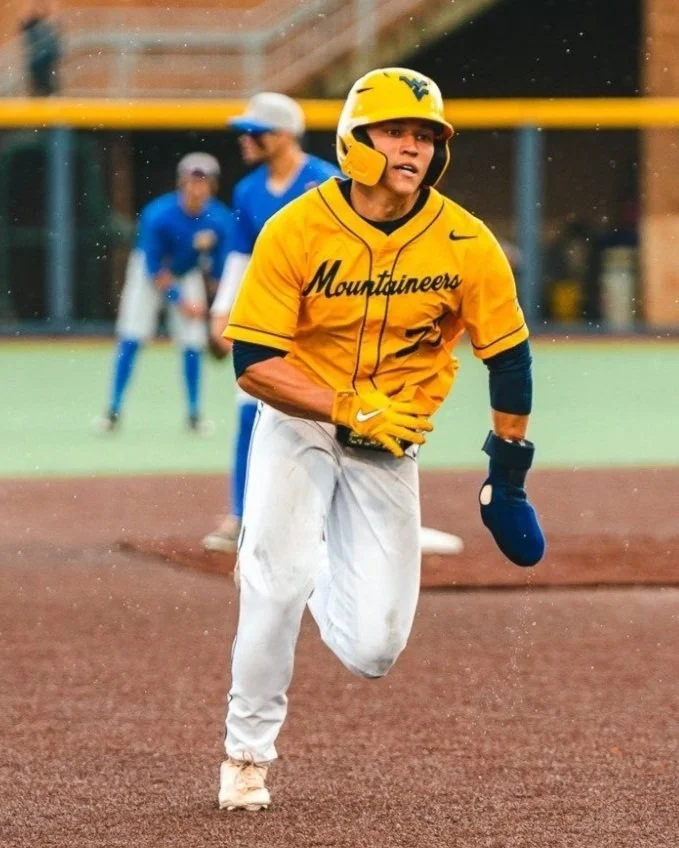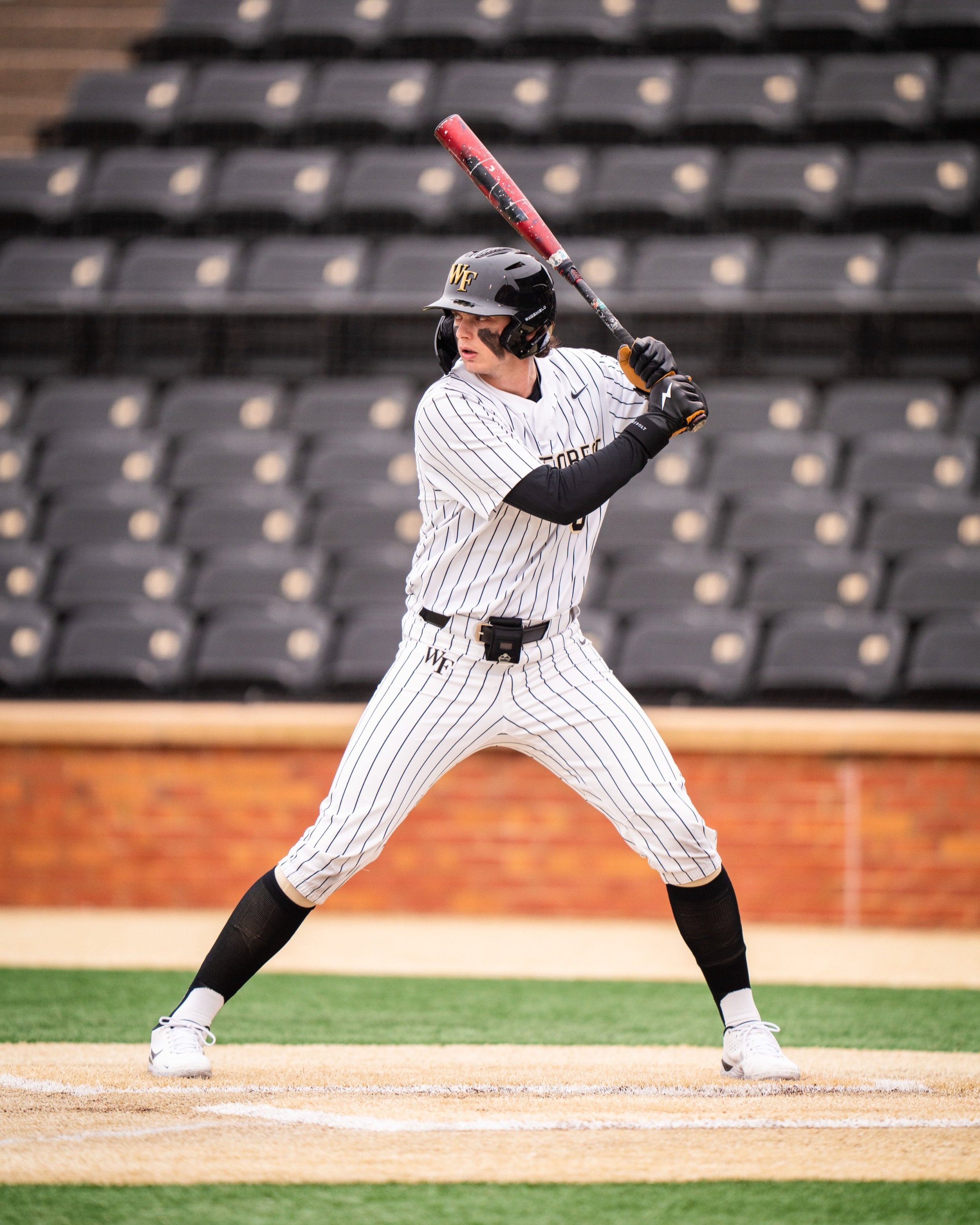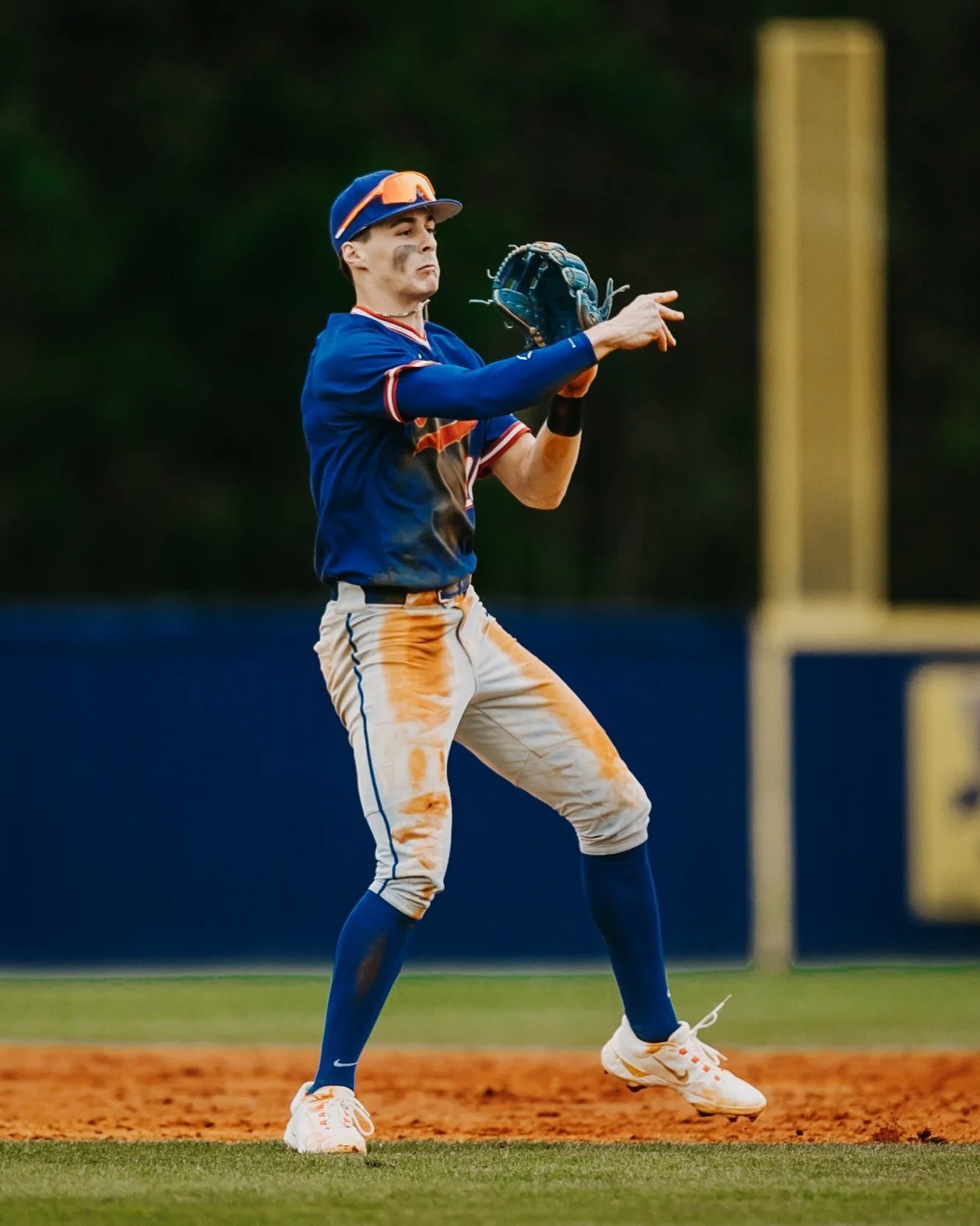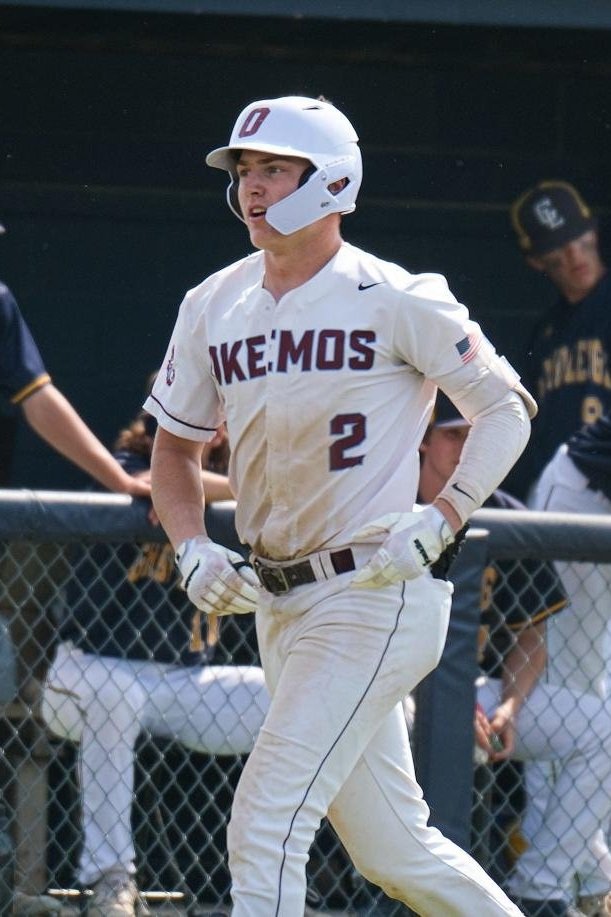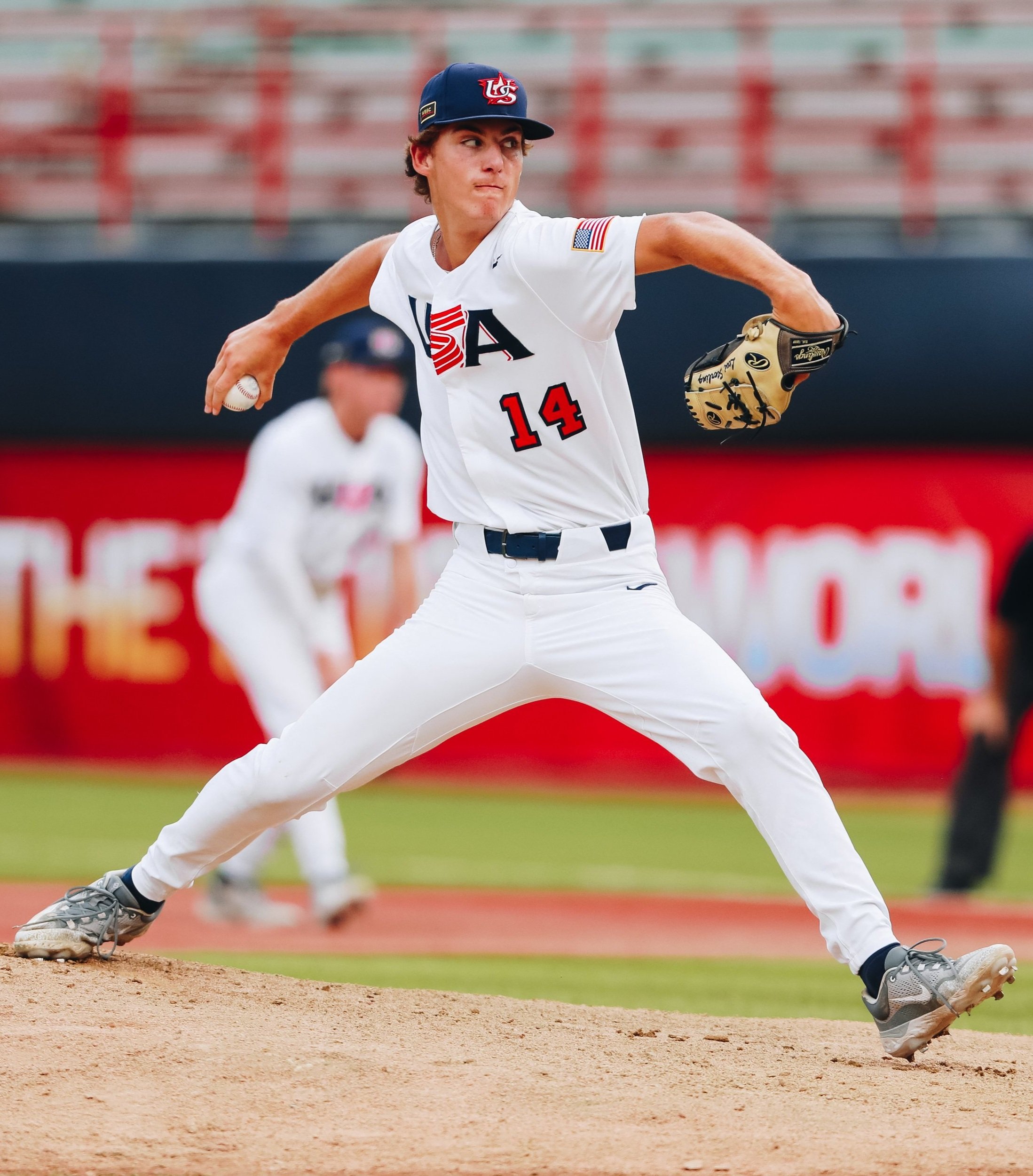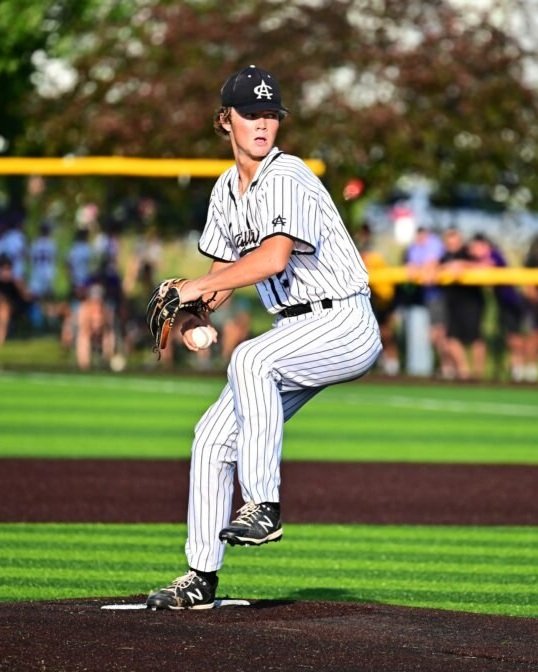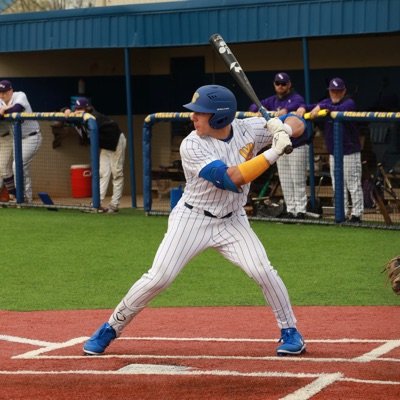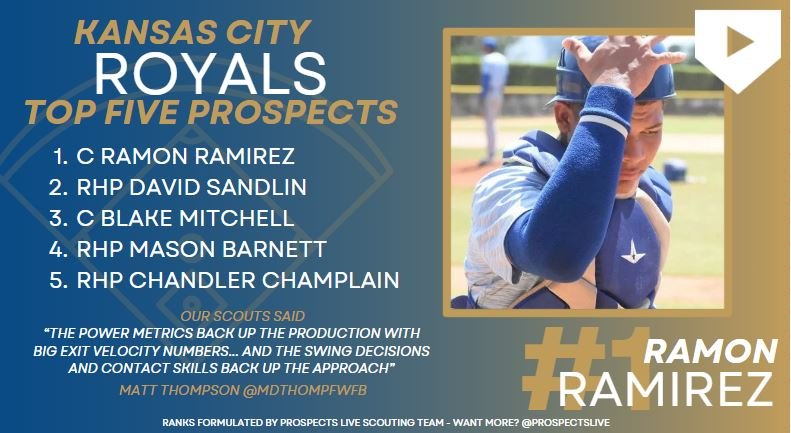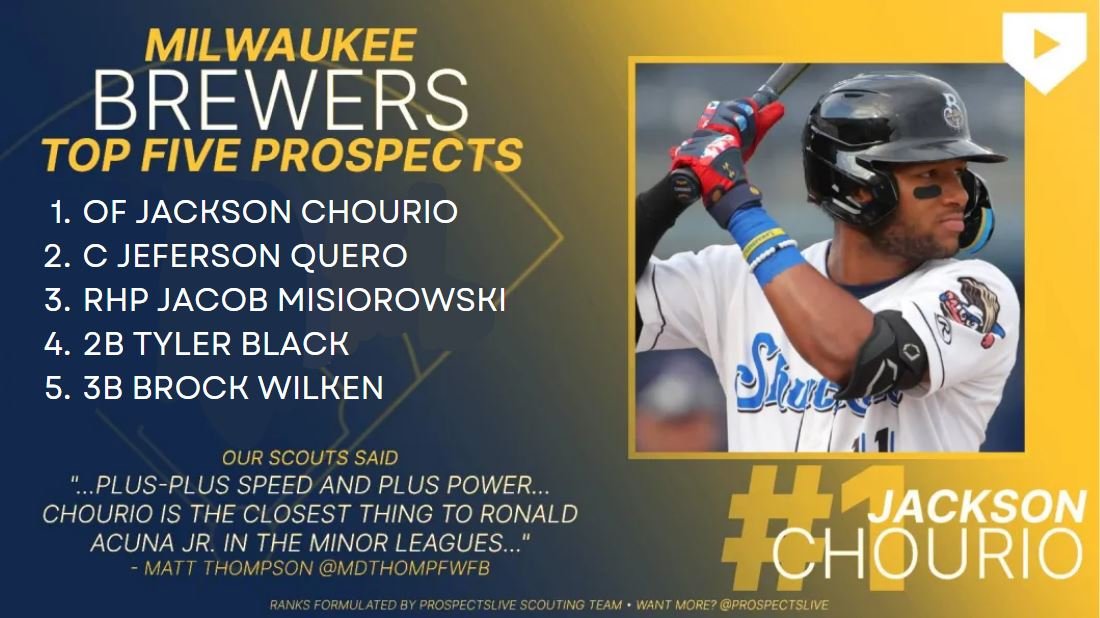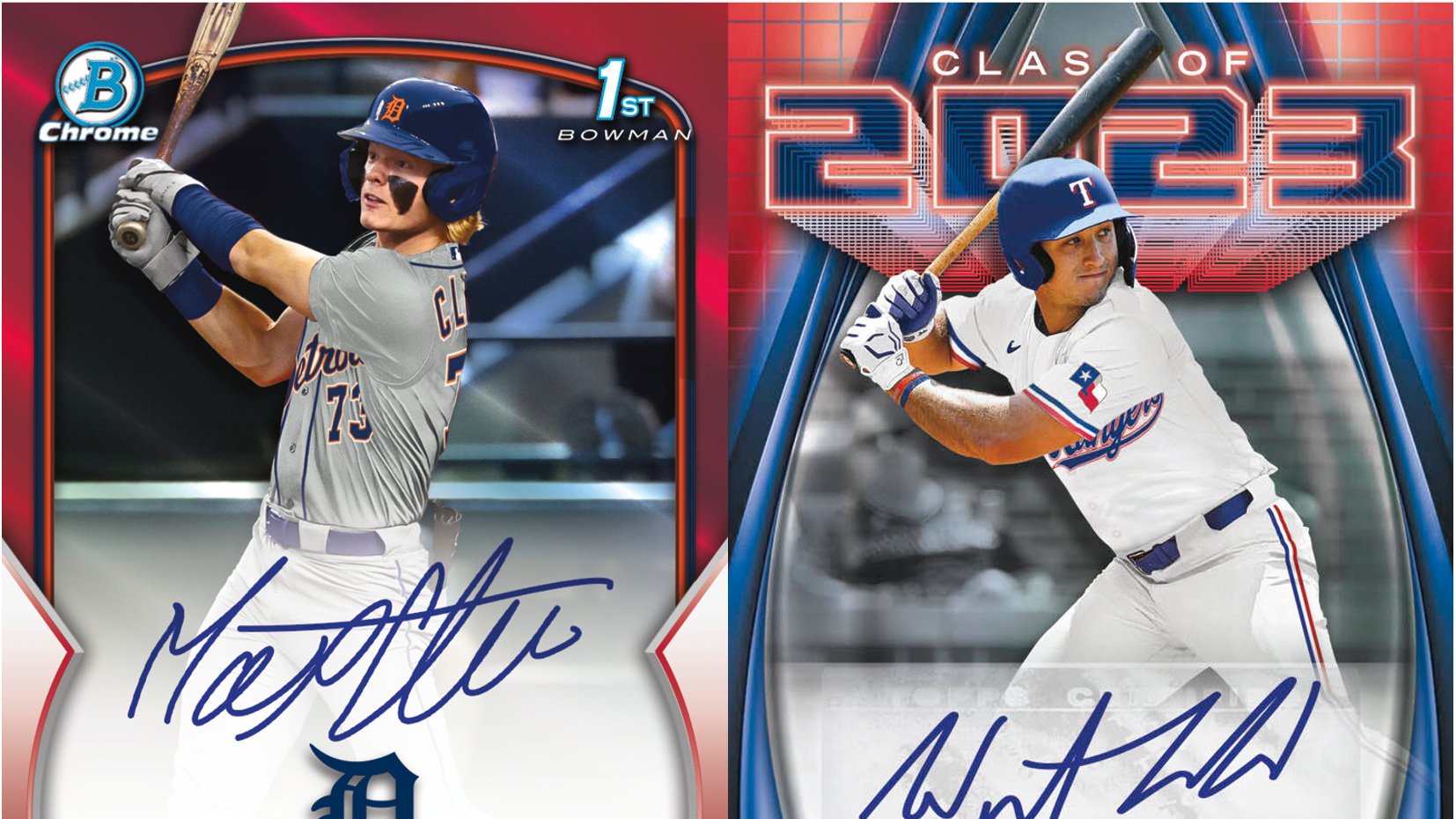The Cleveland Guradians Top 30 Prospects for 2024 led by 1B Kyle Manzardo
Recca's Fall Ball Notebook Pt. 2: Saint Joseph's
The Saint Joseph’s Hawks 2023 season was both historic and heart-wrenching. Led by long-time Head Coach Fritz Hamburg, the Hawks have clearly turned a corner as a program with the right ingredients for sustainable success. Not only did the Joe’s experience its third consecutive winning season in 2023, Coach Hamburg led the team to its first-ever Atlantic 10 regular season championship. Atlantic 10 coaches picked Hamburg for 2023 A10 coach of the year, and he was further honored by the Mid-Atlantic Scouts Association as their selection for 2023 coach of the year. The program has gradually developed into a yearly conference title contender and it looks like the 2024 season will continue that trend. On top of the collegiate success, the team is finding and producing pro-level talent at an expanding rate. Catcher Andrew Cossetti was a 2022 11th-round pick by the Twins, while outfielder Brett Callahan was a 13th-round pick last July; those two draft picks are the start of a trend for the Hawks. After seeing Joe’s this fall on ‘Scout Day,’ I can safely say that more draft selections are on the table for both the 2024 and 2025 drafts.
*Saint Joseph’s Head Baseball Coach Fritz Hamburg (center) accepts the award for 2023 Coach of the Year by the Mid-Atlantic Scouts Association; November, 2023.
Conference: Atlantic 10
2023 Record: 28-24 | A10 Regular Season Champions
Head Coach: Fritz Hamburg | 16th year
Top Prospect ‘24 Draft: Ryan Cesarini, OF
Top Prospect ‘25 Draft: Ryan Weingartner, SS
It wasn’t the start or finish Coach Hamburg and his team were hoping for. The 2023 Hawks struggled out of the gate with a 1-7 start, and after a mid-April loss to Saint Louis, the team was staring at a 12-18 record. Following that loss, Joe’s went on an eight-game win streak and closed out the regular with an improbable 15-3-1 (yes, there was a tie) run that won them the A10 regular season crown. Unfortunately, the team was bounced from the tournament after three games, which included an 8-23 loss to Saint Louis and finally a 10-15 loss to Dayton. Saint Louis and Dayton were able to capitalize on Joe’s inconsistent pitching staff, which was an area of concern for the majority of the 2023 season. Coach Hamburg brought in accomplished Army pitching coach Jeremy Hileman to help bolster things on that side of the ball, and the staff looks improved on paper. While pitching, especially the relief corps, will be the biggest question mark for the 2024 team, Joe’s will also need to restructure their lineup and fill some roles offensively after a few notable departures.
The Hawks figure to have an experienced and productive offense, with five returnees who either logged an OBP over .400 or slugged double-digit homers in 2023. However, Joe’s will be losing a healthy dose of power after the departures of OF Brett Callahan (Tigers), INF Nate Thomas, and SS Luca Trigiani (now with William & Mary), all of whom recorded an ISO above .220 while combining for 28 long balls last spring. After getting an up close and personal view during St. Joseph’s scout day, several hitters looked equipped to replace that lost production. Because it was scout day, most of the action was focused on draft-eligible players, but a quality group of underclassmen made strong impressions as well. Overall, the offense for Coach Hamburg’s group looks strong on paper and will be a driving force toward a potential repeat performance as A10 regular season champs.
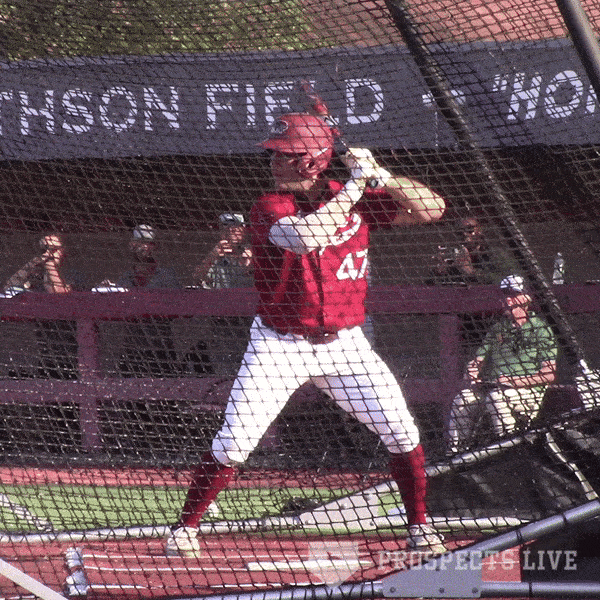
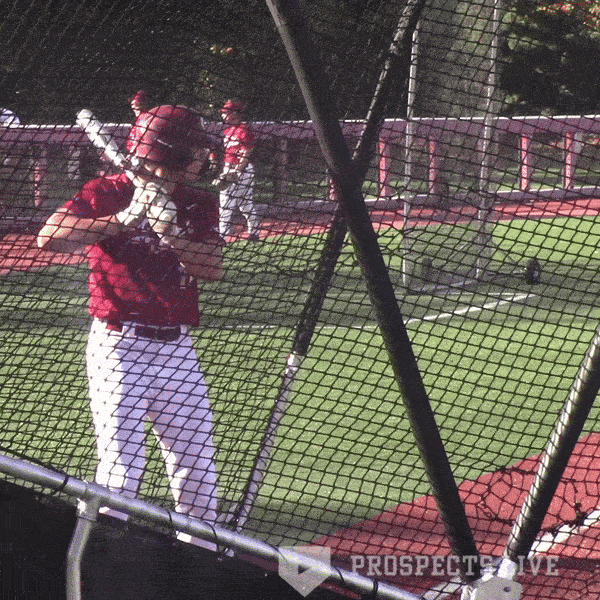
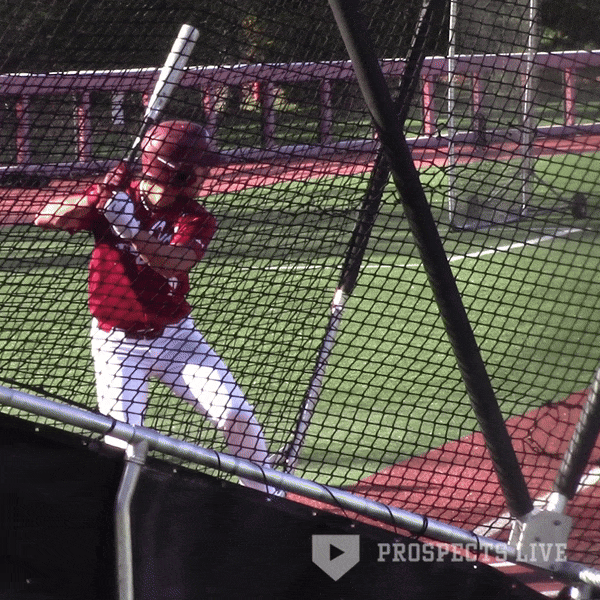
The Hawks' offense will be driven by a trio of Ryans, outfielders Ryan Cesarini and Ryan Picollo, as well as shortstop Ryan Weingartner. This triumvirate combined for 68 extra-base hits and 28 homers last spring, and I think they’re a good bet to surpass those totals in 2024. Let’s start with Ryan Cesarini. The junior from Archibald, PA, led the A10 conference in batting last season (.392) and finished third in OPS (1.088). He enters 2024 as the Hawks’ top draft prospect thanks to a strong track record of performance and impressive tools. Cesarini doesn’t offer much in the way of physical projection, listed at 5’10-205 with a stocky, filled-out frame. Jared Dupere, a 13th-round draft pick out of Northeastern by the Giants in 2021, is a solid body comp for Cesarini, but Cesarini has surprising athleticism and quick actions on the diamond. On scout day, Cesarini showed phenomenal speed with a 60-yard dash time just above 6.40 and home-to-first times in the 4.10-4.20 range. It’s unusual to see plus-level speed from a player with this kind of body; Dupere certainly didn’t display that kind of quickness. Perhaps a better physical comparison for Cesarini (and an admittedly unfair one) is Blue Jays outfielder Daulton Varsho.
At the plate, the lefty-hitting Cesarini has a crouched, compact stance with his hands tucked in tightly behind his helmet. Instead of a traditional stride, he rotates his front knee inward and points the toe of his foot directly into the ground before dropping back down and rotating swiftly into contact. He has quick, adjustable hands and plenty of bat speed to impact the ball on contact. It’s not the most athletic-looking swing, and it’s definitely unorthodox, but Cesarini has a special feel for making contact, which is aided by above-average plate discipline. Cesarini’s raw power teeters right near the above-average to-average line. He’s capable of turning on balls from the belt down for home run contact, which he showcased on a no-doubt blast during a simulated game. I’ll need additional looks before I’m able to make an honest evaluation of his defensive ability. You’d think Cesarini would be a capable centerfielder, given his speed and athleticism, but he split time between left field and DH last spring and only played the corners this summer in the NECBL. We’ll see how he’s deployed moving forward, but as of now, Cesarini has the potential to be a mid-to-late day two draft pick (rounds 6-10) based on what I’ve seen, though I wouldn’t be surprised if he were popped early on day three like Brett Callahan was last July.
Joining Cesarini in the outfield is senior Ryan Picollo, whose 6’4-225 frame stands as a stark contrast to Cesarini's. Picollo has a sturdy, rangy build with a good mixture of athleticism and strength. Despite solid power production last spring (10 HR, .227 ISO), Picollo had a difficult time getting the bat on the ball, as he struck out 55 times in 203 plate appearances. Picollo’s final line of .238/.292/.465 is emblematic of his issues maintaining a consistent approach. When Picollo avoids chasing pitches out of the zone and stays short to the ball, there’s big-time thump and above-average power to his pull side. While Picollo isn’t a burner, he’ll show solid average speed that is more noticeable on the defensive side of the ball. He’s a steady defender with quality arm strength that makes him a dependable option in right field. Picollo showed both the good and the ugly during scout day, with a rocket line drive double to left field but also in-zone whiffs on fastballs. While he may not clear up the rough edges of his game, Picollo possesses the tools and experience to take a step forward and settle in as a much-needed offensive catalyst for the Hawks in 2024. Finally, here’s a fun fact about Picollo: his father, JJ Picollo, oversees baseball operations for the Kansas City Royals as executive vice president and general manager.
The final Ryan set to lead the offense is quite likely the most important. Ryan Weingartner quickly secured the starting second base job during his freshman year and ended the 2024 campaign with a .323/.401/.531 line, which included 10 homers and 17 stolen bases. Not only will Coach Hamburg and company ask Weingartner to build on that breakout debut offensively, but they’ll also ask him to hop over to the other side of the second base bag to hold down shortstop. Weingartner looked the part at short during my initial look, but I’ll need to see how things play out at full game speed this spring to determine his long-term outlook.
An A10 All-Rookie team selection, Weingartner is far from imposing at the plate with a wiry, 5’11-185 build, but he more than makes up for it with a quick bat, uphill swing path, and a “passive-aggressive” approach. He showed an easy, confident swing during BP and had two hard-hit balls during the simulated game. A follow-up performance this spring and summer (he’s playing for the Harwich Mariners on the Cape) could vault him into the mid-day two conversation for the 2025 draft.
Looking beyond the Ryan’s, the Hawks have a couple more promising power options in corner infielder Owen Petrich and catcher Carter Jagiela. Petrich is a transfer portal addition from Delaware where he received minimal playing time the past two years. The 6’2-215 Petrich is a physical corner bat who played third base on scout day. At the plate, Petrich displayed above-average pop from the right side but struggled to handle spin during this brief look. He is highly capable of punishing mistakes, which he demonstrated by hitting multiple hard-hit balls, including the opposite-field homer seen in the clip below. Meanwhile, Jagiela is entering his sophomore year, and his size (6’4-220) and physicality immediately stand out. Jagiela has plus-level power to his pull side with an uphill swing path. He’ll need to iron out some things behind the plate, but he has plenty of arm strength for the catcher position. Jagiela should have plenty of time to hone his craft, as his likely role will be as a backup to senior Justin Igoe. Igoe played in only seven games as an underclassman, but he made up for lost time in 2023 as the full-time starter, finishing the year with a respectable .304/.411/.432 line. With a shorter, stout build, Igoe is a patient hitter with average power and an up-the-middle approach. He only hit three homers last year, but he adds length to the lineup and racks up quality at-bats. Igoe gets the job done behind the plate, though his arm is fringy, which led to an 85% success rate for base stealers last season.
Petrich Packs A
Punch
Delaware transfer Owen Petrich will look to revitalize St. Joseph’s power production in 2024.
Because my viewing came on scout day, the majority of the action involved draft-eligible players, so it was difficult to get a feel for the Hawks class of freshmen. With that said, outfielders Darius Adkins and Joey Gale are intriguing athletes, while middle infielder Tim Dickinson was a consistent performer at Malvern Prep, one of the top high school programs in the state of Pennsylvania. Playing time is likely to be tough to come by in 2024 for this crop of newcomers, but Coach Hamburg and his staff have a knack for getting timely production from their freshmen when needed.
On paper, Coach Hamburg has plenty of options to fill out his weekend rotation. RHP Domenic Picone, RHP Will McCausland, and LHP Ryan DeSanto led the Hawks in starts and innings pitched a year ago, and all three will return in 2024. McCausland and DeSanto were each selected for the A10 All-Rookie Team and remained sharp over the summer in the New England Collegiate Baseball League and the Valley League, respectively. Neither pitched on scout day, but I did see DeSanto last fall and tabbed him as an under-the-radar draft prospect for 2025. The sophomore duo won’t light up radar guns (upper 80s/low 90s in ‘23), but they have performed in games, and both have uniquely interesting traits under the surface when taking a peak at their trackman data. McCausland’s fastball has swing-and-miss traits thanks to a low vertical approach angle, a low release height, and good extension in his delivery. He also has a trio of decent secondary options that he can land for strikes consistently, with the slider showing the most potential of the bunch. DeSanto is about as funky as it gets, with a crossfire finish to his delivery and an extreme over-the-top arm slot. He gets elite IVB on his high spin fastball, which gets on hitters in a hurry with his size and deception. DeSanto will flash a bat-missing curve with 12-6 action and an intriguing changeup with good arm-side fade. Picone was also pitching as Hawk for the first time in 2023 after spending the previous three years at Rhode Island. He’s one of the smaller pitchers you’ll see at the D1 level, standing in at 5’8-180, but he had a respectable 4.50 ERA across 70 innings last spring. His fastball sits in the 88-92 range and plays well up in the strike zone, while his mid-80s cutter/slider hybrid is his best putaway offering.
Junior RHP Matt McShane is another arm that could be a starting option for Coach Hamburg. McShane thrived (2.40 ERA) as a multi-inning reliever as a freshman, but his stuff was down when I saw him last fall. That carried over to the spring, and his performance (5.46 ERA, 4.9 K/9, 10.9 H/9) took a step back as a result. McShane was much better (19.1 IP, 1.40 ERA, 11.6 K/9) with Bourne on the Cape this summer, and the average velocity on his fastball (92-93 MPH) and both breaking balls increased significantly compared to the spring.
McShane was the first pitcher to take the mound on scout day but didn’t face live hitters. The fastball was lively in the 90-92 range, coming from a high slot and a good, flat angle. McShane complimented the fastball with a slider that sat around 82 MPH, an upper-70s curveball, and what appeared to be a low-80s changeup. McShane threw some above-average sliders with late gyro-movement that he commanded better to his glove side. McShane did a really good of tunneling the fastball and slider, increasing the effectiveness of each pitch. He had trouble getting a consistent feel for the curve and changeup, though the curve did flash some sharp vertical break. Given McShane’s build at 6’3-215, his ability to spin multiple breaking balls, and his history of pitching multiple innings at a time, McShane has some traits to serve him in a weekend starter role. However, there’s some effort during his release, and there have been issues maintaining the quality of his stuff, which could indicate a late-inning relief role in the future. At his best, McShane appears to be the team's top draft prospect for 2024, but we’ll need to see how he holds up this spring.
Junior RHP Luke Gabrysh is a wild card for this Joe’s pitching staff. Standing at a lean and projectable 6’3-200, Gabrysh possesses the size and arsenal of a quality starting option. However, his effectiveness has been limited as he’s struggled to throw strikes, evident in his elevated walk rate of 20.4% through 27.1 career innings. On scout day, Gabrysh showcased impressive velocity, sitting consistently at 92-94 with his fastball and touching 95 MPH once. His go-to secondary was a 78-82 MPH slider, boasting remarkable raw spin (2,700+ RPM) and horizontal movement. Additionally, his mid-80s changeup showed plenty of promise with good arm-side movement and depth. Gabrysh allowed hard contact on multiple belt-high fastballs over the middle as he struggled to consistently command the pitch in the zone. The command of his secondaries appeared superior to his fastball command in this brief appearance. Overall, it’s one of the better three-pitch mixes on the Hawks staff in terms of raw stuff, but the ability to execute remains an open question. Regardless, Gabrysh provides some high-upside depth for the rotation with the kind of loud stuff you could envision closing out games. If things click for Garbrysh this spring, he’d make for a dynamic weapon down the stretch for St. Joseph’s and would likely fetch draft interest on day 3.
While the weekend rotation boasts a surplus of seasoned arms, the bullpen is marked by uncertainty. A notable portion of the relievers returning from last spring finished the year with ERAs north of 9.00. Gabrysh certainly has the raw ability to help bolster the pen if that’s where he ends up, and that’s also true for righty Alec Rodriguez, who is back as a grad student. Rodriguez looked poised for a breakout season last spring but was unable to fill the zone enough to be a reliable option. He’s a good athlete with a high-effort delivery and a slingy arm action that can be difficult to repeat. Rodriguez’s heater has a lot of movement with both riding and running life, which may actually be a contributing factor to his control issues. The velocity on his fastball remained solid as he averaged 92 MPH (max 95) and touched 94 MPH multiple times. His best pitch is a wipeout slider in the low 80s that generates well above-average whiff rates. Rodriguez had a decent changeup last spring that he used against lefty batters, and I thought I saw a couple of cutters at 87 MPH during this outing, which I believe would be a new pitch. As with Garbrysh, there’s no doubt Rodriguez possesses the repertoire to be a high-leverage relief option, but a significant improvement to his 2023 walk rate (18.7%) is required. RHP Colin Yablonski is a grad transfer from Coastal Carolina who sat 90-92 MPH on scout day with an above-average curveball in the upper 70s. He’s shown a little more velocity in the past, so he could just be warming up. Yet another grad year righty is Mike Picollo, who was an unsigned 33rd-round draft pick by the Mets in 2018 and is also the older brother of Ryan Picollo. He’s a low/side slot righty with a mid-to-upper 80s fastball and a late-breaking slider that should be tough on right-handed bats. He hasn’t had much success at the college level, but he did a great job repeating his funky delivery on scout day. Senior David Owsik displayed two quality secondaries, a 78-79 MPH sweeper and an 80 MPH changeup, complementing an 88 MPH fastball. While I didn’t see freshman RHP Luke Parise take the mound, his development is worth tracking. Listed as both a pitcher and catcher, Parise is a good athlete who receives high praise for his competitiveness and makeup.
Undoubtedly, the bullpen stands as a potential Achilles' heel for St. Joseph's in 2024. However, the depth of diverse options and present arm talent suggest that a reversal of fortunes is on the table. All in all, Coach Hamburg’s club is well-equipped to secure a conference title and a trip to regionals in 2024.
This Week in Baseball Cards - 1/15 - 1/21
The Creation of Predictive Stuff Metrics: Unveiling the pSTFERA Suite
2024 MLB Draft: Top 100 College Prospects
Director’s Note: All Draft Day Ages for players are pinned to July 14, 2024, our guess as to when the MLB Draft will start. The league has not announced the dates for the 2024 MLB Draft and once revealed, we will adjust approximate ages to that date.
The 2024 Top 100 High School board can be found here. Once the season is in full bloom, we will begin to integrate a single list, starting off with 200 prospects. As always, our 2024 Prospect Footage can be found here.
1. 2B/SS JJ Wetherholt, West Virginia
Height: 5’10
Weight: 190
B/T: L/R
Draft Day Age: 21 yr 10 mo
Wetherholt's bat has a chance to be very special, as the mix of pure hit and power tools profile as one of the best in the entire country. Wetherholt posts elite contact rates and seldom whiffs with impressive feel for the barrel. It's a compact and powerful swing from the left side of the plate, showcasing very quick hands and loud bat speed. Wetherholt utilizes the whole field to his advantage and will punish the gaps with legitimate above-average to plus power, which also plays well to his pull side. It's a truly special bat. He's played at third base and second base the past two years, though he's been given a chance at shortstop this fall and the reports are promising. The range is there to handle the position, though the arm strength needs some improvement. He's a solid runner and knows how to be a menace on the basepaths, as well, recording 36 stolen bases in 2023.
2. 1B Nick Kurtz, Wake Forest
Height: 6’5
Weight: 235
B/T: L/L
Draft Day Age: 21 yr 4 mo
Coming in at 6'5, 235lbs, Nick Kurtz is a monster of a human being at the plate. The size, strength, and power Kurtz possesses is a scout's dream. The Wake Forest first baseman has a scary good offensive profile. He is going to draw his fair share of walks due to his patience at the plate while also hitting for massive power thanks to his near 70-grade pop. On top of that, he's got a well advanced approach at the plate and is able to use the entire field. Shockingly for his size, he is fairly athletic and can more than hold his own at first base. He's one of the best defenders at first base and easily grades as a plus defender. Kurtz is a likely frontrunner to be the 2024 ACC Player of the Year and should be providing plenty of offense as the anchor for the Demon Deacons lineup. He has the makings of becoming a force in a big league lineup and will likely be a fast riser through the minors.
3. 2B Travis Bazzana, Oregon State
Height: 6’0
Weight: 199
B/T: L/R
Draft Day Age: 21 yr 10 mo
An import from Australia, Bazzana's overall toolset is ridiculously impressive. He's put up incredible numbers in his two years at Oregon State, slashing .340/.463/.549 across two seasons in Corvallis with elite bat-to-ball skills and plate discipline. He's a really tough out at the plate, rarely expanding the zone and he's got an incredible eye, racking up walks aplenty. His spray chart is a thing of beauty, utilizing the entire field with a compact, line drive swing with a ton of bat speed that is meant to do serious damage. It's above-average juice at the present and most of it plays to his pull side, but he's shown an ability to hammer the ball to the opposite field gap. Bazzana is also an incredible runner, posting plus run times on a consistent basis. He's primarily been a second baseman up to this point, though there's a chance we see him at shortstop in 2024. He's got enough athleticism and twitch to have solid range there, though his arm is nothing more than average. Either way you draw it up, this is a potentially elite bat with suitable defense up the middle.
4. RHP Chase Burns, Wake Forest
Height: 6’4
Weight: 195
B/T: R/R
Draft Day Age: 21 yr 5 mo
Burns is an electric factory on the bump. The Wake Forest transfer is a bulldog type on the mound and he exudes all the confidence you want to see in a pitcher on the mound. He isn't afraid to go right after batters with his electric fastball. What is an elite two-pitch mix, he sits in the upper-90s with significant life to the fastball and pairs it with a diabolical upper-80s/low-90s slider that he can manipulate the shape of. He also isn't afraid to reach back on his fastball for a little extra and can get it up to 101-102 mph. He's been working on a curveball and a splitter, flashing potential, though he doesn't rely on either heavily. His command can waiver at times, but when he is locked in, he can paint a masterpiece. Even with the slight command woes, the stuff is elite and it will be interesting to see what the Wake Forest pitching lab can do to elevate his already incredible arsenal to the next level. He is the best arm in this class.
5. 1B/of Charlie Condon, Georgia
Height: 6’6
Weight: 211
B/T: R/R
Draft Day Age: 21 yr 3 mo
The reigning SEC Freshman of the Year, Condon's unexpected emergence was a welcome sight. After redshirting his first year on campus, Condon exploded onto the scene with a .386/.484/.800 slash line and 25 home runs in 56 games. Condon has a towering, physical frame at 6'6, 211 pounds with plenty of strength throughout his body and there's quite a bit of projection to it still. Condon has plus-plus raw power to all fields and got to it often in 2023, posting healthy exit velocities and even getting into the 110-115 MPH range. It's a ton of bat speed and very quick hands with the barrel exploding through the zone with little effort. There's some hitterish traits with Condon, as he has solid bat-to-ball skills, though he does have his struggles with spin. Defensively, Condon has enough speed and athleticism to handle a corner outfield spot, though if he outgrows the position, he can handle first base. The bat would have to continue to perform in that case and that's the selling point right now.
6. OF Vance Honeycutt, North Carolina
Height: 6’3
Weight: 205
B/T: R/R
Draft Day Age: 21 yr 1 mo
Finding guys with five tool potential is a tough task, but Honeycutt has the potential to be that type of player. Honeycutt showed plenty of improvements in the strikeout department in 2023, dropping the strikeout rate significantly, though that came with the price of production. Nonetheless, Honeycutt has game-changing tools. There's plenty of bat speed from the right side of the plate and there's potentially plus power that plays to his pull side and he'll hit the gaps to show off his blazing speed. The swing-and-miss has toned down and he rarely chases, which is promising for the hit tool. If everything comes together in 2024, there's potential for an above-average hit tool here. He's a lock to stick in center field long term, as his plus speed gives him exceptional range and he'll make highlight reel plays on a consistent basis. There's a strong arm here, as well. If everything clicks, there's serious 1-1 potential.
7. SS/OF Seaver King, Wake Forest
Height: 6’0
Weight: 190
B/T: R/R
Draft Day Age: 21 yr 2 mo
One of the funnest development stories to follow, Seaver King has made his way to Wake Forest after playing last year at Division II Wingate. He was quite undersized coming out of high school which only earned him the Wingate offer, but he's grown a bit since then and found his way into a gig with what might be one of the best college teams going into the 2024 season. King has a robust line-drive approach at the plate with tons of bat speed and has the ability to use the entire field to go along with very good exit velocities, getting up to 111 MPH this fall. King doesn't strikeout often and gets a lot of barrel to ball, but he also doesn't walk a ton either and the chase rates are a bit too high. If he can improve the discipline in 2024 and continue to blast the baseball, he'll be a certified top fifteen pick. He's rather twitchy in the field and can play a myriad of positions for Wake Forest this spring, including center field.
8. RHP Brody Brecht, Iowa
Height: 6’4
Weight: 225
B/T: R/R
Draft Day Age: 21 yr 9 mo
Brecht may have the highest upside of any arm in this loaded college class and he's lit up Stuff+ models with some of the loudest stuff in the college landscape. Brecht has undergone some mechanical tweaks since his high school days, most notably being a shortened arm action that has given him more deception. It's a very quick arm with excellent athleticism, as well. He's gotten up to 101 MPH during starts in 2023, holding upper-90s velocity well throughout his starts, accuring whiffs at a high rate despite suboptimal vertical carry. The slider is the real deal, showing true double-plus potential with hellacious bite. It'll display shorter break with late lateral movement and he's shown an ability to land it for strikes when the fastball command is out of whack. He's tinkered with a low-90s change-up and a low-80s curveball, but he's primarily just had to use the FB-SL combination thus far. The high walk rate and command woes have been the big thing holding Brecht back, though he did show improved fastball command down the stretch for the Hawkeyes. He's stepped away from football and will be focusing solely on pitching moving forward.
9. 1B/LHP Jac Caglianone, Florida
Height: 6’5
Weight: 245
B/T: L/L
Draft Day Age: 21 yr 5 mo
Dubbed the "Ohtani" of college baseball, Caglianone is one of the most well-known players at the amateur level with legitimate two-way potential. There's a bit of rawness to his game, but the power on both sides of the ball are rather impressive. We'll start with the bat, which might have the best power in this entire class. It's easy double-plus right now with extremely quick hand speed and torque, generating a ton of bat speed and all fields power. He's producing some of the loudest exit velocities in the country as a result. The hit tool could use some refinement, as he's rather aggressive and expands the zone frequently. On the defensive side, it's a first-base profile. As an arm, Caglianone has loud stuff, but the command holds him back. The fastball has flirted with triple digits with some life, paired with a bullet-esque slider with solid potential and a bigger bender. The change-up has excellent velocity separation and fading life, boasting a high whiff rate. He's tinkered with his mechanics, becoming more compact this fall, but time will tell how much this helps his command. The jury is still out on if he has to choose one or the other, but the upside on both sides is enticing.
10. OF Mike sirota, Northeastern
Height: 6’3
Weight: 188
B/T: R/R
Draft Day Age: 21 yr
Sirota is about as well-rounded of a hitter as you'll find in college baseball. The Northeastern outfielder possesses a rare combination of discipline, power, and hit ability that is hard to come by at the amateur level. Offensively, he lets the ball get deep in the zone, allowing him to stay back and drive the ball to all fields with authority. He rarely chases pitches out of the zone, drawing plenty of walks in the process. Though he occasionally gets knocked for playing at a mid-major, his performance against high-quality pitching over the last two summers in the Cape Cod League show he can excel with a competition jump and wood bat. His speed allows him to cover a ton of ground in center field, which is where he projects as plus long-term. Sirota's advanced bat combined with his athleticism are what make him a potential first-round pick.
2019 Bowman Draft Retrospective
Taking a current look at the players with 1st Bowman cards from 2019 Bowman Draft which include many of the current crop of up and coming young MLB talent and both the 2023 AL and NL Rookies of the year with Corbin Carroll and Gunnar Henderson, not to mention Adley Rutschman, Josh Jung, Bryson Stott, George Kirby, CJ Abrams, Riley Greene, and more.
2024 MLB Draft: Top 100 Prep Prospects
Director’s Note: All Draft Day Ages for players are pinned to July 14, 2024, our guess as to when the MLB Draft will start. The league has not announced the dates for the 2024 MLB Draft and once revealed, we will adjust approximate ages to that date.
The 2024 Top 100 College board will be released tomorrow. Once the season is in full bloom, we will begin to integrate a single list, starting off with 200 prospects. As always, our 2024 Prospect Footage can be found here.
1. OF/RHP Konnor Griffin, jackson Prep (MS)
Height: 6’4
Weight: 210
B/T: R/R
Commitment: Louisiana state
Draft Day age: 18 yr 2 mo
There may not be a more famous name in this class than Konnor Griffin, who reclassified from the 2025 ranks and has a chance to be the first prep player off the board next July. Given the reclassification, he projects to be one of the younger guys in this class, though you wouldn't know that with mix of physicality and projection. He's got two-way abilities, though most project him as a center fielder, where his athleticism, plus speed, and excellent range are on full display. He's got a very good arm and plenty of twitchiness, too. At the dish, it's a polished approach with a ton of bat speed and over-the-fence power, which projects as plus once he's fully developed. His overall contact has shown some inconsistencies this summer, though it's gotten better as the summer has progressed. All in all, Griffin has the potential to be rather special offensively. There's upside on the bump, as well, as he's already gotten into the mid-90s with his fastball and shows a promising breaking ball with swing-and-miss traits, too.
2. 1B/OF PJ Morlando, Summerville HS (SC)
Height: 6’3
Weight: 200
b/t: L/R
commitment: South Carolina
draft day age: 19 yr 1 mo
There's no mincing words here, Morlando projects as the biggest offensive threat in this year's prep class thanks to a loud combination of high contact rates, robust power, and mature plate discipline. Morlando has a quiet setup with a wide lower half, but he really explodes through the zone with quick hands and high-end bat speed. He's a patient hitter who knows the strike zone and isn't afraid to rack up the free passes, plus he'll utilize the whole field and keeps the whiffs to a minimum. The power potential with Morlando is sky high with the bat speed and leverage/loft he generates and he's already put on shows during batting practices in big league stadiums. It's easily plus right now. Defensively, he projects as a potential corner outfielder thanks to his athleticism and average speed/arm, which have improved over the years. There's still a chance that he moves to a first base role as he grows, though that's not set in stone just yet. The South Carolina commit will be a fun one to follow for years.
3. 3B Caleb Bonemer, Okemos HS (MI)
height: 6’1
weight: 195
B/T: R/R
COMMITMENT: Virginia
DRAFT DAY AGE: 18 yr 9 mo
Bonemer profiles as one of the biggest, if not the biggest, riser from the summer circuit, propelling himself to the top of the class with a loud toolset. It's a legitimate power/speed threat with a chance to be a solid defender on the left side of the dirt. There's not a ton of wasted energy with Bonemer's swing, as he stays very quiet through his load and short to the ball, displaying explosive bat speed from the right side and punishing baseballs in the process. Most of his power plays up the middle and to his pullside and he's already produced multiple exit velocities over 105 MPH. If there's anything to work on with Bonemer, it's polishing up his plate discipline, as he does run into some issues with whiffs and the chase rate is a bit higher than you'd want to see. Despite the physical nature of his frame, he's very athletic and produces plus or better run times. He's got a very good glove and could stay at shortstop, though given his size, a move to third base seems likely, where he'd be a potentially above-average or better defender.
4. RHP Levi Sterling, Notre Dame HS (CA)
Height: 6’4
Weight: 190
B/T: R/R
Commitment: Texas
Draft Day Age: 17 yr 10 mo
Sterling turned in a loud summer and has vaulted himself to the top of the class with a mix of loud stuff, pitchability, and projection. For starters, Sterling will be one of the youngest players in the entire class, as he won't turn 18 until September, which certainly helps him in team model runs. He projects as a starter with a buttery-smooth delivery on the mound and a legitimate four-pitch mix that is led by a fastball that's already in the low-90s with life and can easily get into the mid-90s with added strength to his long and lanky frame. His best secondary comes in the form of a low-mid 80s change-up, which has splitter-esque movement and dives hard away from lefties. He mixes in an upper-70s curveball that classifies more as a sweeper and a mid-80s cutter with tight spin to righties. He's got plenty of athleticism and he throws a large quantity of strikes as a result, showcasing potentially above-average command at best.
5. SS Carter Johnson, oxford HS (AL)
Height: 6’2
Weight: 180
B/T: L/R
Commitment: Alabama
Draft Day Age: 18 yr 4 mo
As a hitter, Johnson possesses almost everything you want to see in a swing from a prep prospect. His hands work quick, his hips fire, and there's plenty of bat speed. He has performed at every summer event that he has attended, and shows an ability to barrel up stuff, as well as taking what the pitcher gives him. Defensively, Johnson has the instincts and hands to stick on the dirt, but there are concerns about his foot speed at shortstop. A move to 2nd base or 3rd base could be made down the line, but Johnson has the prototypical long shortstop body to add strength and should be given every opportunity to prove that he can handle the speed and physicality of the position. Even if there is a future move to 2nd or 3rd base, Johnson has enough power and hitting ability to stick at those positions. He's a high follow for the Deep South region, and is the top prep prospect in the state of Alabama.
6. 1B/LHP Noah Franco, IMG Academy (FL)
Height: 6’3
Weight: 205
B/T: L/L
Commitment: TCU
Draft Day Age: 18 yr 2 mo
Another reclassified player from the 2025 class, Franco has some of the best two-way upside in this class. He's got a physical frame with very broad shoulders and plenty of athleticism that plays well on both sides of the ball, though there's a bit more upside with the bat. There is some swing-and-miss to his game, but he's not afraid to rack up walks and doesn't chase a ton, plus he's been able to hold his own in left-on-left matchups. There's plenty of bat speed present and he swings with serious intent, spraying the ball to all fields and showcasing solid power up the middle and to his pull-side. That'll get better as he becomes physically mature. He's likely limited to first base with his size, though don't let that fool you. He's rather mobile and shows quick twitch at the position, letting his athleticism shine. On the bump, he's been into the low-90s with easy, athletic mechanics and it's easy to project him into the mid-90s by next summer. He's got a high spin slider that has some teeth in the low-80s with late sweep, as well as feel for a change-up.
7. RHP Joey oakie, Ankeny centennial HS (IA)
Height: 6’3
Weight: 207
B/T: R/R
Commitment: iowa
Draft Day Age: 18 yr 2 mo
Another loud arm coming out of Ankeny, Iowa, Oakie has some of the loudest stuff in the entire class. Oakie generates a ton of scap load in his delivery with a big arm swing before driving down the mound with a whippy, near sidearm slot. He's already gotten into the mid-90s with the fastball, getting up to 97 MPH, with a ton of life and spin through the zone and plays up thanks to the low launch nature of his release. It wouldn't be a shock to see Oakie's velocity jump into the upper-90s when all is said and done, either. Oakie's sweeper might be the best pitch in the prep ranks, a diabolical pitch with a ton of sweep and hard biting action in the mid-80s and projects as plus. He's gotten up to 25 inches of horizontal break this summer and the pitch has insanely high spin rates, touching the 3,000 RPM barrier. He's got feel for a fading change-up that he throws hard in the mid-upper 80s that projects well, too. He'll need to iron out some command inconsistencies, but this is an enticing package overall.
8. RHP Owen Hall, Edmond north HS (OK)
Height: 6’3
Weight: 185
B/T: R/R
Commitment: Vanderbilt
Draft Day Age: 18 yr 8 mo
Hall is another big riser from the summer circuit, vaulting himself into the top ten with a mix of present stuff and starter traits. It's a fluid and athletic delivery on the bump with a lean frame that has plenty of projection remaining at 6'3, 185 pounds. Hall's fastball is rather explosive with a ton of late life, especially at the top of the zone, and he'll show a bit of a two-seam/sinker variant at the bottom of the zone. He throws plenty of strikes with the heater and he'll hold 92-95 MPH throughout outings, plus he's already been up to 98 MPH in shorter stints. It's a future plus pitch. He's got two breaking balls, a slider/cutter hybrid in the mid-80s that has good two-plane tilt and a curveball in the mid-to-upper-70s that has good depth, but lacks bite/conviction at times. He's developing a mid-80s splitter, as well. He'll need to develop consistency with his off-speed arsenal, but there's a ton to like with the Vanderbilt commit.
9. OF Slade Caldwell, valley view HS (AR)
Height: 5’9
Weight: 182
B/T: L/L
Commitment: Mississippi
Draft Day Age: 18 yr
The best way to describe Caldwell would be to call him a "menace." While he lacks premium physicality due to his shorter stature, Caldwell makes up for it with explosive athleticism and polish. It's a sweet swing from the left side of the plate and he's shown excellent plate discipline, rarely chasing and showcasing plenty of patience, drawing walks aplenty. There's solid barrel consistency in his swing and he utilizes the gaps often, prioritizing his plus-plus speed on the basepaths as a result. He's rather strong for his size and has been able to put the ball in the air more, though it's always going to be hit-over-power with Caldwell. His speed allows him to cover ground very well in center field, where he's a solid defender with great instincts. If there's anything to knock him on, it's the lack of a strong arm, which may push him to left field. With that said, he's got the tools to stick at the "eight" long term. He'll have plenty of fans come draft day.
10. RHP William Schmidt, Catholic HS (LA)
Height: 6’4
Weight: 180
b/t: R/R
COMMITMENT: Louisiana State
DRAFT DAY AGE: 18 yr 9 mo
In terms of raw stuff, Schmidt's one-two punch might be the best in this class. An above-average, if not better, athlete on the mound, Schmidt is a quick mover on the mound where his athleticism is explosive and there's a ton of projection with his long, lean frame. The fastball has seen a solid velocity uptick over the past year, now touching 95 MPH and holding 90-94 MPH consistently. There's plenty of riding life with the heater, as well as some cut, and given the projection, it's likely that he could get into the upper-90s soon. The true separator with Schmidt is an upper-70s curveball with a ton of upside. It's a true 12-6 hammer with tons of depth and extremely high spin rates, exceeding the 3,000 RPM threshold on occasion. There's plenty of bat-missing traits between those two pitches and he's developing an upper-70s change-up with plenty of fading life. Command comes and goes, but given the projection and pure stuff, this is a profile that can sneak into the first round with further development.
USA Baseball Releases 2024 NHSI Lineup
The 16-team field has been unveiled for the eleventh edition of the National High School Invitational, one of the most prestigious prep tournaments on the scouting calendar. The tournament, which USA Baseball hosts, will take place at the National Training Complex in Cary, North Carolina from April 10th to April 13th.
The single-elimination style tournament has a rich history of draft talent that has come through the gates since its inception in 2012. The likes of Cody Bellinger, Joey Gallo, Max Fried, and Lucas Giolito have stepped foot in the complex, as well as recent top draft picks in Dylan Lesko, Mikey Romero, Jack Leiter, and Pete Crow-Armstrong. In 2023, the tournament added three more first-rounders to its resume, with Noble Meyer, Adrian Santana, and Ralphy Velasquez putting together excellent outings last April. Velasquez recorded six hits throughout the tournament and took home All-Tournament honors, while Meyer struck out ten in seven stellar innings in a tough-luck loss to Calvary Christian. Santana utilized the event to show off his burgeoning toolset, which culminated in the Rays selecting him at 31st overall. Overall, nine players who participated in the 2023 edition were drafted last July.
This year’s lineup features a stout lineup, including reigning champions Huntington Beach and the return of three-time champions Orange Lutheran. Florida and California have four teams apiece with North Carolina and Arizona being the only other states with multiple participants. This will be the first time in tournament history that two in-state schools appear in Cary, plus the District of Columbia is being represented for the first time. Here is the full lineup of teams:
Apex Friendship (Apex, NC)
Bishop Gorman (Las Vegas, NV)
Casteel (Queen Creek, AZ)
Chaparral (Scottsdale, AZ)
Corona (Corona, CA)
Farragut (Knoxville, TN)
Hagerty (Oviedo, FL)
Harvard-Westlake (Studio City, CA)
Huntington Beach (Huntington Beach, CA)
Key West (Key West, FL)
Orange Lutheran (Orange, CA)
Puyallup (Puyallup, WA)
St. John’s College (Washington, D.C.)
St. John’s Country Day (Orange Park, FL)
Trinity Christian Academy (Jacksonville, FL)
Wesleyan Christian Academy (High Point, NC)
There’s an impressive lineup of prospects in the 2024 class that’ll take the field in Cary, but there’s also high-end talent in the 2025 and 2026 classes that are worth paying attention to. We’ll tease a few of our new Top 100 rankings in this list (which will come out later this week), but here’s a list of prospects to keep an eye on in all three classes come April 10th:
2024s:
LHP Ethan Schiefelbein, Corona (#13)
RHP/SS Bryce Rainer, Harvard-Westlake (#14)
OF Derek Curiel, Orange Lutheran (#22)
LHP Mason Russell, Casteel (#50)
RHP Duncan Marsten, Harvard-Westlake (#73)
C Burke-Lee Mabeus, Bishop Gorman (#79)
C Josh Springer, Corona (#82)
LHP Talan Bell, Hagerty
UTL Chris Newstrom, Chaparral
RHP Cade O’Leary, Farragut
RHP Nathan Aceves, Huntington Beach
RHP Tommy Bridges, Harvard-Westlake
SS Gabe Fraser, Orange Lutheran
OF Kyle Boylston, St. John’s Country Day
RHP Felix Ong, Key West
SS Austin Jacobs, Hagerty
C Kailand Halstead, Puyallup
OF Brennon Seigler, Farragut
2025s:
RHP Seth Hernandez, Corona
SS Brady Ebel, Corona
RHP/SS Billy Carlson, Corona
RHP Josh Hammond, Wesleyan Christian Academy
RHP Sam Cozart, Wesleyan Christian Academy
OF Josiah Hartshorn, Orange Lutheran
C Trent Grindlinger, Huntington Beach
SS Linkin Garcia, Huntington Beach
OF Domaine Vann, Wesleyan Christian Academy
SS Mason Pike, Puyallup
2026s:
OF Brady Harris, Trinity Christian Academy
RHP Ethan Wheeler, Trinity Christian Academy
OF Ryan Harwood, Casteel
C Brady Murrieta, Orange Lutheran
RHP Brayden Harris, Trinity Christian Academy
2023 Hobby Year in Review
Introducing Sequencing+: A Strategy-Based Metric Quantifying Pitch Sequencing
This Week in Baseball Cards - 12/25 - 12/31
Deep(er) Drives: Alabama's Ben Hess
Deep(er) Drives is back and now that we’ve closed the book on the 2023 draft class, it’s time to start diving into some of the more interesting prospects in this year’s class. There are admittedly some questions left to be answered in this class, especially in the college arm demographic. There’s a lot of upside, especially in the upper echelon of this class. Here are the arms that I firmly believe are in that echelon:
RHP Chase Burns, Wake Forest
RHP Brody Brecht, Iowa
LHP Hagen Smith, Arkansas
Burns is the top arm for us and it’s easy to see why. It’s a loud one-two punch with very solid mechanics, though we’d like to see improvements in secondaries and how the stuff plays over lengthier starts. Brecht and Smith are hampered by command woes but have insanely loud metrics. They’ve both shown improvements this fall, with Brecht showcasing smoother mechanics and Smith adding more velocity, touching triple digits in Fayetteville. However, if there was another name that I could add to this tier, had they been fully healthy, it would be Alabama’s Ben Hess.
Maybe it’s a bit bold to say that, but what Hess was doing pre-injury was nothing short of extraordinary. Hess was having a breakout year through seven starts, posting a 3.22 ERA across 36.1 innings and recording a remarkable 49:8 K:BB ratio. Hess’s stuff took a significant uptick and was a big piece to the puzzle for his emergence, but there’s a lot more under the hood when you dive deeper into his profile. So what else led to Hess’ rise and what has to happen in 2024? Let’s dive in.
The uptick in strikes is the first thing that pops out when looking into Hess’ success. With his 2022 and 2023 seasons being a similar sample size, it’s a bit easier to note the difference. Between the seasons, here are the numbers:
Hess’ command was certainly a weak spot in 2022, but the jump in strikes that we saw in 2023 is quite underrated, particularly with the heater. At 62% in 2022, this resulted in the fastball not performing to the best of its ability. For reference, his fastball was in the zone just 51% of the time and there is a correlation between fastball performance and zone percentage. The higher the zone percentage, the better the fastball plays in the zone. This wasn’t the only change that occurred to the heater, and we’ll get to that later, but the results do speak for themselves. Here are those numbers:
Seeing a substantial jump like that in the zone certainly draws attention to you. In turn, Hess’ walk rate dropped to a minuscule 5.47%, dropping from the 13.48% mark he posted as a freshman. We'd like to see how the command plays over a full season, especially since Hess has yet to eclipse the 40-inning barrier, but we feel confident that the command will be roughly the same in 2024.
The next thing on the list to talk about is the fastball itself. Hess’ heater projects as a plus offering in our eyes, making it one of the best collegiate fastballs in the class. I’m a big fan of a heater that misses bats and that’s exactly what you get here. Missing bats at a 34% clip in his 36.1 inning sample this spring, Hess’ success has come as a result of tweaks at his release and his average velocity creeping into the mid-90s. As a freshman, Hess averaged 93.2 MPH and tickled 95 MPH, and given the size and athleticism, more was expected to come along. His velocity jumped forward as a sophomore, averaging 94.7 MPH and he brushed 99 MPH on a couple of occasions. At this point, he’s still in a recovery mode from his injury suffered in March, which we will touch on more later, but he’s already been up to 96 MPH in side sessions and there could be more in the tank this spring, but time will tell on that.
Credit: Ryan Ferron (@FerronRyan) on Twitter
One big change in the fastball metrics resides in the pitch’s Vertical Approach Angle, or VAA for short. VAA is the angle at which the pitch approaches the plate and it’s become a popular asset with pitch development. When it comes to four-seam fastballs, like Hess’, the average we look for is -5 degrees. Anything lower than that mark (i.e. -4.5 degrees) is optimal, as it gives the pitch a leg up at the top of the zone. Anything higher than that mark (i.e. -6 degrees) hampers four-seamers and will be more suitable for sinkers/two-seamers at the bottom of the zone. With Hess, his VAA dropped four-tenths of a degree from -5.1 to -4.7, and with the increase in velocity, the pitch began to perform at a higher degree. This was likely due to a slight tweak in wrist orientation at release, as that helps create a flatter plane to the plate.
In terms of shape, Hess features a pitch with slightly above-average carry, registering 17.4 inches, and a large amount of arm-side run, coming in at 13.5 inches. I’ve created a scatter chart with the fastball metrics of our Top 50 College arms to compare Hess’ shape (which is surrounded by a black circle) to others:
Hess traded half an inch of carry for half an inch of run in 2023, giving him the third-highest horizontal movement mark amongst our Top 50 College arms. Add high spin rates to the mix and you’ve got a recipe for success. There is a comparison I’d like to make, and maybe it’s a bold one to use, but I’ll do it anyway: Hess’ 2023 heater is comparable to Chase Dollander’s 2022 metrics.
I must add that this is strictly going off the pure movement metrics, as the sample size difference between the two is substantial (Dollander doubled Hess’ fastball total). Dollander’s 2022 fastball averaged ~17.6 inches of IVB and 12.4 inches of hMov, which isn’t too far off of what Hess had in 2023. Dollander has Hess beat in the VAA department, though, as Dollander’s VAA was half a degree lower and played a big role in his bat-missing stuff. Dollander’s heater tickled the 70-grade barrier before seeing some regression in the movement profile, and an argument can be made for Hess, too.
All in all, Hess’ heater is comfortably in the plus tier for me. There are not too many glaring flaws metrically and he passes the bat-missing test with flying colors. The 30% in-zone whiff rate and 29% chase rate are indicative of how successful the pitch has become and there’s no reason to think it won’t perform the same this upcoming spring unless something drastic occurs. I’d love to see how it plays over a full season.
Hess isn’t just fastball-reliant, though. He has three off-speed pitches that are at least average or better and at least one with legitimate plus potential. We’ll start with that pitch and it’s the upper-70s curveball that has true hammer potential. He only threw it 11% of the time in 2023, the least of his secondaries, but it racked up whiffs over 50% of the time. He averages over 2,600 RPMs with his spin rate and it can get a bit slurvy, though most of the time, it’ll feature an 11/5 shape. It averages over 13 inches of depth, which gives him roughly 31 inches of vertical separation between this and the heater. Sprinkle in 15 inches of sweep on average and you’ve got yourself a banger. He throws it hard with intent and it really snaps over the plate, allowing him to utilize it for chases out of the zone and he’s got feel to land it for strikes. He’s still learning to command it better, but this is a potential plus pitch with legitimate swing-and-miss traits.
The change-up is his third pitch behind the curveball, giving him a viable option against left-handed hitters. It has the potential to be a power change in the mid-80s with a ton of horizontal movement away from lefties, averaging close to 17 inches. He does kill a good amount of spin on the pitch, though you can still classify it as a high-spin offering with it being around the 1,950 RPM mark. He does a good job of selling it with similar arm speed and likes to throw it in the zone often. As he continues to gain confidence in the pitch, he’ll begin to throw it down and in to righties more. I’m confident in slapping an above-average grade for the time being, but there’s a legitimate chance it can become plus with time.
Lastly, we’ll talk about Hess’ slider, which profiles as his fourth-best offering. He throws it hard in the upper-80s with cutter-esque movement, though the spin metrics aren’t as sharp as the curveball. It’s his most used secondary and he likes to command it away from righties/in on lefties, though it lacks consistent bite and doesn’t generate a ton of chases with it. It’s a fine average offering for now, but refinement is needed at the next level. He may opt to ditch the slider in the minor leagues and lean more on his curveball, but for now, he’s comfortable throwing it.
Now that we’ve talked about the arsenal and command, let’s address the elephant in the room. Hess has been hampered by injuries during his collegiate career, limiting him to just 70 total innings. He missed the first three weeks of the 2022 season due to an injury and suffered a forearm strain during his start against Arkansas in late March, which ended his 2023 campaign. He’s been on the mend since, but when we spoke to Head Coach Rob Vaughn in October, Hess was throwing in side sessions and had a pitch count in a scrimmage against Florida State. The expectation is that Hess will slide into the Friday night role for the Crimson Tide.
Luckily for Hess, there’s been a bit less pushback from teams when it comes to elbow injuries. In the past few years, we’ve seen several highly regarded arms selected in the top 100 picks despite battling elbow ailments. Jaxon Wiggins and Teddy McGraw are two names that come to mind in last year’s class, as well as Dylan Lesko and Connor Prielipp in 2022. With that said, if Hess were to be a first-round selection this July, he’ll need a fully healthy spring. In the case that Hess suffers another injury, I still envision him being selected in the second or third round, especially with the weak prep class. Overall, this is a very talented arm that has shown that he has the stuff to be one of the best arms in the class. A plus heater that’s backed up by three average or better off-speed pitches and premium command is tough to come by in today’s game. Time will tell whether this becomes true or not, but expect Hess to make some noise come February.












